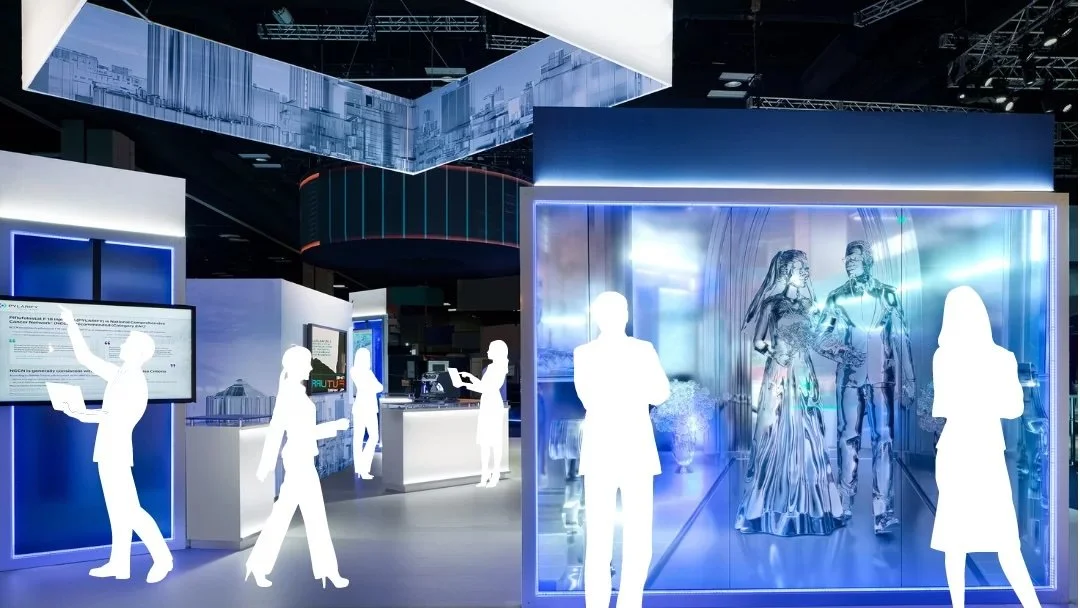Where Are All the Sales Reps?
This article was originally published by Access TCA, as an installment of their Advocacy Through Access series, which explored engagement in an ever-changing events industry.
As conventions finally bounce back to pre-pandemic attendance, the aisles are filled with healthcare providers eager to engage in person. So, why are so many companies sending so few reps, and why are some not sending any reps at all?
Short answer: there are fewer reps, the cost of taking them out of the field is higher than ever, and there may be better alternatives.
The number of pharmaceutical sales representatives in the U.S. decreased by 38% from 2005 to 2014 due to economic pressures, reduced physician interactions, and the rise of digital marketing (BEC Search) (Fierce Pharma). Employment in sales occupations is expected to continue declining through 2032. (Bureau of Labor Statistics). And with fewer reps calling on more physicians, the opportunity cost of taking them out of their territory several times a year increases exponentially. Consider the quality-of-life component: many reps who became accustomed to being at home with their families during the pandemic aren’t too eager to give up their weekends to detail physicians on somebody else’s call list.
Specialized Expertise and Aligned Interests
Supplementing in-house sales reps with contracted staff has long been a stop-gap solution for secondary and overlapping meetings. But today, as exhibitors put newfound emphasis on engagement over traditional detailing (read this and this), more and more exhibitors are deploying contract reps instead of in-house reps, even at their most important meetings.
Reps hired specifically to staff conventions are often retired salespeople and undergo several weeks of product training. They also understand that every second with the wrong attendee is a missed chance to speak with the right one, and they are masters at quickly qualifying and tactfully disengaging from non-targets. Their goals are aligned with those of the marketing team: creating substantive engagement with as many qualified HCPs as possible over 3-4 days.
Contract reps are a self-selecting group. Rusty Wooten, president and founder of the Wooten Group, a Dallas-based agency that provides trained contract sales engagers for conventions, adds, “Many of the professionals we hire are retired reps from big companies. They relish the energy and opportunities to interact with physicians at conventions. Money isn’t the primary motivator.”
Of course, contract reps aren’t the only option for hired guns: facilitators are highly trained front-line ambassadors who work the carpet line with ruthless efficiency and just enough charm to lure visitors into the exhibit and steer them to the right person with product knowledge. They come from many backgrounds, with a disproportionate share being young, aspiring actors with both temperament and stamina for being “on” for long periods.
Working together, reps and facilitators can supercharge the team’s collective performance and seriously improve convention ROI.
Where Do We Go From Here?
Pharma is risk-averse, and moving to a fully outsourced staffing model sounds controversial. Yet early adopters of the fully- outsourced model claim they have broad internal support. One convention manager shared that the head of sales training was the sole voice of dissent when her company committed to outsourcing most of their reps at conventions. Proponents insist the incremental cost is negligible and easily justified by the time in-house reps gain back in their territories. The icing on the cake: shifting the carbon footprint and travel costs to suppliers helps these companies meet sustainability goals. And their suppliers, smaller companies flying under the sustainability radar [for now], are eager to fill these roles.
It seems like everyone else is on board, too. Convention managers find that contract reps need far less oversight. Physicians don’t know that they aren’t talking to in-house reps. In-house reps seem content to concentrate on their territories without losing weekends to shows. Show organizers don’t care who staffs the exhibits as long as they are staffed. For the agencies (like Access) behind the creative engagement strategies, the relentless focus on successful engagement creates a glow around our work.
What’s Next for “Engagement First?”
Assuming the math works, success by larger companies will encourage the smaller ones to proceed accordingly, benefiting from the best practices and guardrails being established right now.
It’s also only a matter of time before we see a proliferation of contract MSLs, credentialed through programs like The Medical Science Liaison Board Certification (MSL-BC®), staffing our clients’ reimagined medical areas. One expert in the field tells me that state and local licensing authorities are busier than ever, writing and rewriting regulations to eliminate myriad legal hurdles for MSLs and other healthcare professionals temporarily working at conventions in their respective locales. Suppliers are also building the expertise and infrastructure necessary to help their clients navigate this latest set of regulatory landmines.
Outsourced or not, staffing exhibits with professionals who embrace the unique challenges of convention marketing and who are focused on creating substantive, authentic engagement will validate early adopters of the “engagement first” strategy and ultimately increase the value of their investment and the medium as a whole. And that’s something we can all get behind.
In my next blog post, I’ll offer some suggestions for clinical-stage companies seeking to increase the return on their investment as they move toward commercialization.
Agree? Disagree? Leave a comment.

